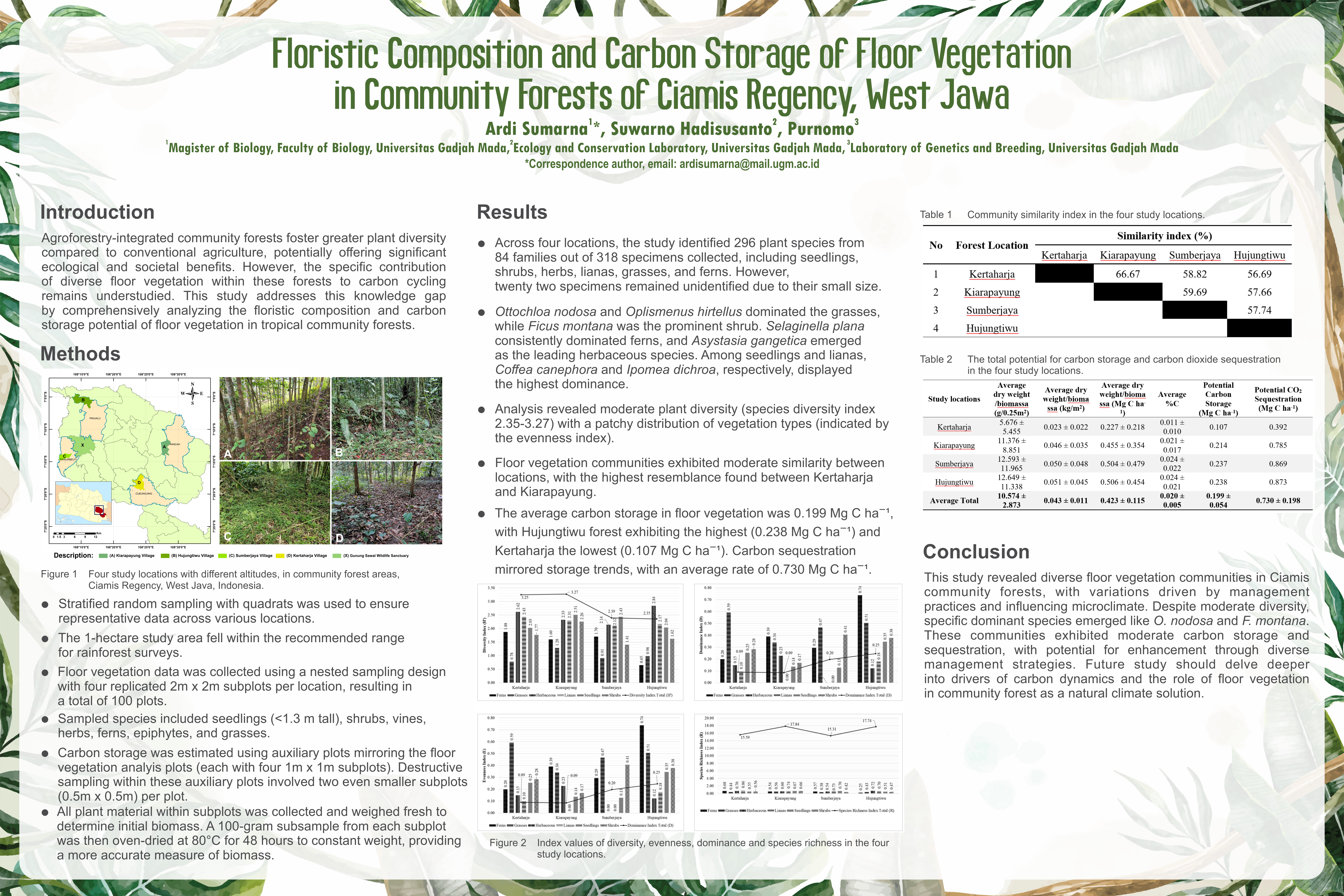Abstract
The potential of merchantable timber and firewood of Sengon (Paraserienthes falcataria) in Desa Bateh community forest were estimated by developing allometric equations method. To establish the allometric equations 400 sample trees were measured to determine the relationships between tree heightt (H) and diameter at breast height (D). Twenty trees of various sizes were cut to measure the merchantable timber and firewood volume. The raw merchantable timber volume of sengon (Paraserienthess falcataria) in the community forest was defined as the ligneous material contained in the bole and branches which both a diameters of at least 10 cm. The results showed that D (taken at about 1.3 m above the ground) was a good predictor of H with r2 value over 0.9141. When D was combined with H, r2 was improved somewhat for the merchantable timber and firewood volume, suggesting the growth pattern of tree dimensiions were closely interdependent. A standing stock of the merchantable timber and timber and firewood volume of sengon in the community forest was then estimated based on allometric relations. Proportions of the merchantable timber and firewood volume were 70,84% and 29,16% of total wood volume per tree, respectively, with a basal area of 13.620 m2/ha. Based on th basal area, Desa Bateh community forest could be classified into dense stands category.


